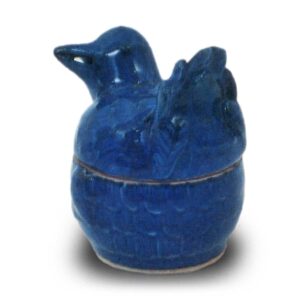
Chinese translation of Sanskrit Vaidürya. It originally referred to translucent gemstones of several colors, and later referred exclusively to blue ones, but is also used to refer to glassy ones. It is probably first mentioned in the Han shu (Book of Han classics) in the biography of the western regions as “Ryurei. Many later texts refer to the glass as brittle and translucent, and some are even colored. Many of the ancients seem to think that boli and ryuri are two different things, while others seem to refer to the same thing, but there is no proof that they are the same thing or that they are foreign objects. In Japan, the term ryuri used in the Heian period (794-1185) seems to refer to blue glass, and white ryuri is mentioned in the Tale of Genji. Ryuri tiles used in Chinese palaces and royal residences in the past were said to have been made of a mixture of aluminum and sodium silicate, which gave them a glassy, slightly transparent appearance and made them useful in pottery glazes as decorative items and blue pigments. (It is useful as an ornamental and blue pigment in pottery glazes (Jyutsu-kyo ontology, Honzo tsuname, Nanshu foreign object history, Yimon kojipu, Miliaishi ryuhen, Gyokko, Wakun shiori).
Ruri glaze
A type of colored glaze colored with cobalt oxide, often applied mainly to Lü Song true jar porcelain. The lapis lazuli color produced at the National Porcelain Manufactory in Sevres, France, is the most well-known.



